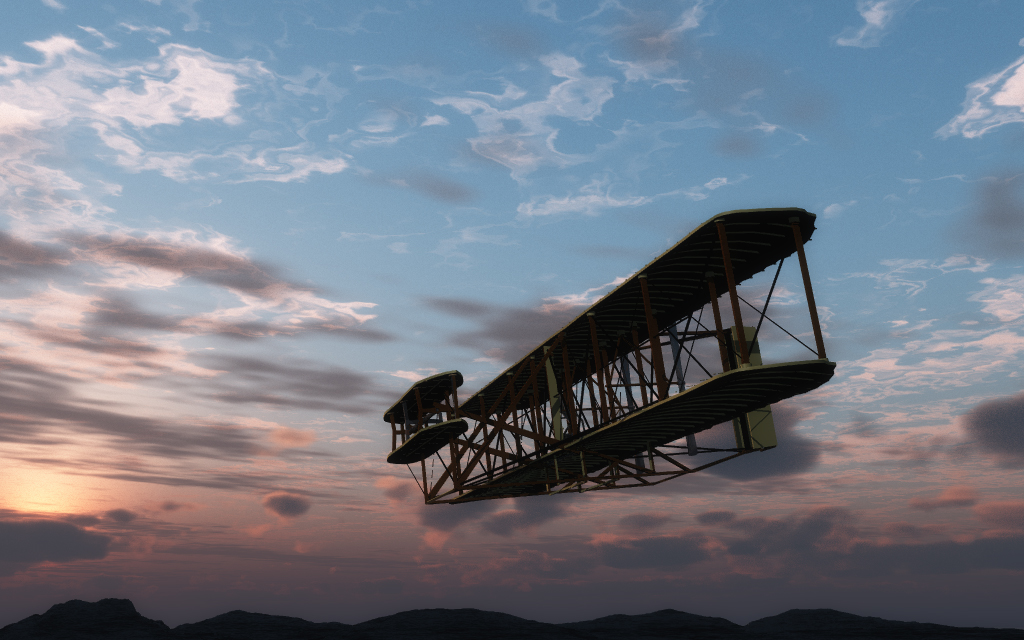
How America can win the race to commercializing fusion energy, reap a fortune, and save the world.
by Randall Volberg, CEO of Fusion One
It’s the dead of winter in the year 1903. In a humble corner of a weather bureau, a teletype operator feverishly taps into history…
“Success…four flights Thursday morning…all against twenty one mile wind…started from level with engine power alone…average speed through air thirty one miles…longest 57 seconds…inform Press…home Christmas.”
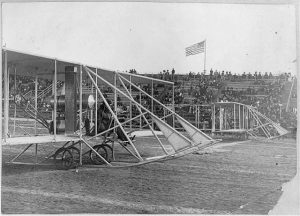 That day over a century ago on a windswept beach in North Carolina, Orville and Wilbur Wright catapulted us into the age of flight which now generates $700 billion annually with 53 million flights, 3.8 billion passengers a year, and employing 10 million people. Today we can fly coast-to-coast in five hours for the price of a week’s work on minimum wage. Aviation is an example of an inevitable industry. We are now living through the nascent phase of another – fusion power. And as aviation was the responsibility of the Wright brother’s generation to make real, fusion is the great calling of ours.
That day over a century ago on a windswept beach in North Carolina, Orville and Wilbur Wright catapulted us into the age of flight which now generates $700 billion annually with 53 million flights, 3.8 billion passengers a year, and employing 10 million people. Today we can fly coast-to-coast in five hours for the price of a week’s work on minimum wage. Aviation is an example of an inevitable industry. We are now living through the nascent phase of another – fusion power. And as aviation was the responsibility of the Wright brother’s generation to make real, fusion is the great calling of ours.
The airplane is an indispensable fixture of modernity, like smartphones or refrigerators – we cannot imagine life without it. At the source of all these inventions is one even more vital – energy. From fire to the electrification of major world cities, our technological evolution has been predicated upon energy – how much we use, how we’re able to use it, and how we produce it. Nothing has brought more people out of poverty than access to modern energy.
We are now at the threshold of another era. When fusion is commercialized, it will not be another addition to the energy mix – it is a disruptive technology capable of displacing all other energy forms to power the next stage of human progress both on earth and our expansion into space. As much as information technology has defined the 21st century, this period will be remembered as the dawn of the Fusion Age and America must tap into its DNA of innovation to lead the transformation.
This reality is not embraced by skeptics who relish in the hackneyed half-joke that “fusion is 30 years away and always will be” – a modern version of “if humans could fly, we would have wings.” There is some basis for cynicism. Historically, fusion researchers have been unrealistic in their scope, time, and cost estimates to get a reactor on the grid. This is due to a witch’s brew of over-optimism, chronic underfunding, technological homogeneity, and acquiescence to the short-term expectations of public and private funders.
Three interrelated directives must be set in motion for fusion to shed its albatross and realize its destiny as the ultimate energy source.
1. Big Goals Need Long Runaways
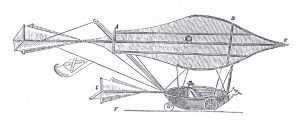 Here is a common fallacy: if something is taking longer than expected, then it is unlikely to work or will take so long to render it irrelevant. History proves the opposite. In 1804, the basic design and scale model of an airplane (fuselage, tail, fixed wings, etc.) was conceived by George Cayley, a full century before the Wright brothers took to the air. Given the difficultly international teams were having, the New York Times predicted that human flight would take at least a million years to accomplish. That was published nine weeks prior to the Wright brothers taking flight.
Here is a common fallacy: if something is taking longer than expected, then it is unlikely to work or will take so long to render it irrelevant. History proves the opposite. In 1804, the basic design and scale model of an airplane (fuselage, tail, fixed wings, etc.) was conceived by George Cayley, a full century before the Wright brothers took to the air. Given the difficultly international teams were having, the New York Times predicted that human flight would take at least a million years to accomplish. That was published nine weeks prior to the Wright brothers taking flight.
The challenge of estimation for fusion R&D lies in its inherent dynamism – unforeseeable physics such as plasma instabilities tend to surface along the way. These impacts can range from complete deal-breakers, to surmountable speed bumps, to opening whole new realms of scientific discovery. The more complexity, the more likely these are to occur. Mastering the force that drives the sun and the stars is complex – a Promethean feat that necessitates patience and long-term thinking to accommodate these “unknown unknowns.” Given the tremendous environmental, economic and energy benefits fusion brings, it is worth the wait.
That is not to say the US should not look for ways to accelerate development, particularly considering Paris agreement commitments to limit global warming below 2°C. As a precondition, we must displace a global infrastructure over-reliant on fossil fuels for generating electricity in the face of increasing demand from emerging economies and the electrification of transportation. Realistically, this requires exporting a clean baseload power source that is universally deployable, accepted as safe, cheap as coal and virtually limitless in supply. This is the promise that fusion can and must deliver on.
2. More Irons in the Fire
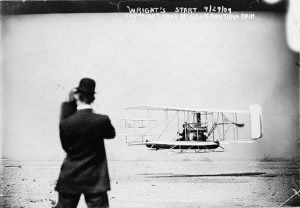 The best means to reach the finish line sooner is by having more horses in the race. This means fast tracking development with parallel approaches to fusion. Beginning in the 1970s, the US appropriated the lion’s share of funding to advance toroidal reactors, most notably the Russian-designed tokamak which established an early performance lead. One exception was made for research into laser fusion given its primary utility to simulate nuclear weapon detonations post signing of the Nuclear Test Ban Treaty. All other non-toroidal reactor projects were drastically cut or cancelled and this single-track approach continues to this day.
The best means to reach the finish line sooner is by having more horses in the race. This means fast tracking development with parallel approaches to fusion. Beginning in the 1970s, the US appropriated the lion’s share of funding to advance toroidal reactors, most notably the Russian-designed tokamak which established an early performance lead. One exception was made for research into laser fusion given its primary utility to simulate nuclear weapon detonations post signing of the Nuclear Test Ban Treaty. All other non-toroidal reactor projects were drastically cut or cancelled and this single-track approach continues to this day.
Around the turn of the 21st century, entrepreneurial scientists dusted off many of these original concepts and secured funding from billionaires and venture capital firms to form private fusion startups. Some of these alternative reactors are now viable contenders to reach commercialization using modalities potentially cheaper and faster to develop, deploy and operate. However, the pool of venture capitalists with the appetite for frontier investments in fusion is very limited given the standard investment thesis is geared to realize returns within five years and for projects with less perceived technological risk.
On the public side, the 2016 US budget for fusion research in the DoE Office of Science was $438 million, of which non-toroidal alternative reactor concepts received nothing. The only support for alternatives was from a separate $30 million ARPA-e grant, which was itself focused on a subset. America has an ace up its sleeve – it benefits from a brilliant base of scientists and engineers working on a multitude of unique fusion projects underway in universities, national labs, and the private sector that need better funding to advance to the next stage of technological readiness. While Asia, Russia and the EU are spending billions almost exclusively on toroidal confinement, the US can mitigate the risks of having all eggs in one basket by supporting the array of fusion reactors being advanced right now on American soil (field-reversed configuration, magnetic cusp, magnetized target, Z-pinch, electrostatic, etc.). America must maximize its talent and cultivate the entire fusion field given the impossibility of predicting where the breakthrough will emerge. As it did with aviation, achieving fusion first in America will yield a legion of benefits that come from delivering a new industry to the world worth trillions.
It is tempting to conclude that mainline government projects are most likely to succeed given their historical and current resource dominance. Consider again the advent of flight. Major nations were working under an emergency directive to invent a flying machine for military use. The US government backed one major project and nine days after it failed, two bike mechanics took to the sky. Five years later, the Wright brothers sold their first military aircraft to the government for $25,000.
3. Turn up the Faucet
Cleantech investments were once de rigueur, hitting a peak in 2008 of $4.1 billion in private funds and augmented by tens of billions more in government subsidies loans, and taxes breaks. Due to severe losses in renewables, the cleantech sector is now treated by most VCs as a crime scene with the occasional deal sliding under the police tape to safer projects that offer modest improvements or smart grid efficiencies. On the frontier side, there are promising developments of late with the formation of the Breakthrough Energy Coalition that was founded by Bill Gates and comprised of global A-listers and top-tier VCs looking to “sufficiently mobilize investment in truly transformative energy solutions for the future.” The funding is expected to start in 2017 and it is up to the fusion community to ensure it is first in line.
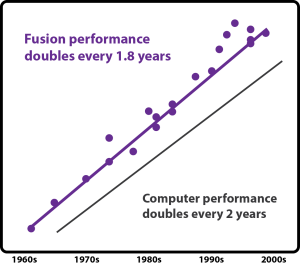 Washington must establish a more robust, inclusive program and not get trapped into false economy thinking. Some members of Congress ask why taxpayers should continue funding fusion given the decades and billions already spent with no deliverables. What does fusion have to show for itself? Well, a lot. Fusion performance has improved by a factor of 100,000, doubling every 1.8 years (faster than Moore’s Law). In the 1960s, less than 1% of breakeven energy could be achieved. Today, researchers have achieved 67% of breakeven, meaning it took 24 megawatts of electrical power to produce 16 megawatts of fusion energy. It has achieved this for an average spend of around $500 million annually since the program began in 1953. In addition, advancements with supporting technologies have coincided directly with fusion’s performance trajectory leading to spin-offs estimated at over $300 billion.
Washington must establish a more robust, inclusive program and not get trapped into false economy thinking. Some members of Congress ask why taxpayers should continue funding fusion given the decades and billions already spent with no deliverables. What does fusion have to show for itself? Well, a lot. Fusion performance has improved by a factor of 100,000, doubling every 1.8 years (faster than Moore’s Law). In the 1960s, less than 1% of breakeven energy could be achieved. Today, researchers have achieved 67% of breakeven, meaning it took 24 megawatts of electrical power to produce 16 megawatts of fusion energy. It has achieved this for an average spend of around $500 million annually since the program began in 1953. In addition, advancements with supporting technologies have coincided directly with fusion’s performance trajectory leading to spin-offs estimated at over $300 billion.
In martial arts, to break through a board you do not aim your strike at its surface, you aim beyond it. For a fusion breakthrough, legislators must make appropriations not where they think fusion is but where they want it to be. Regarding fusion as some far-off technology to be realized in the distant future becomes a self-fulfilling prophecy. A bright future powered by fusion is not arrived at – it is created. As with all breakthroughs, from the four-minute mile to breaking the sound barrier, fusion power born in the USA will be an inevitability only if we treat it as such. By investing ahead of the performance curve, policymakers will be legislating with vision, looking beyond the immediacy of their political terms for the welfare of their constituency, the world, and future generations.
It is Time for New Investment
At a time when the US should be making a full court press, the amount we spend on fusion today is three times less than it was in the 1980s and early 1990s. Obama made good on a pledge to the Mission Innovation global initiative to double clean energy spending in his 2017 budget. Yet fusion, the best hope for a ubiquitous clean energy future, did not receive any of this money – in fact, it had its budget cut even further. In contrast, countries like China realize the stakes and are conducting their own Manhattan project for fusion by spending billions training thousands of new scientists for billion dollar fusion projects now underway and larger ones being planned.
President-elect Trump ran on the promise of making America great again. A great nation is one that pioneers monumental advances in science and technology that inspires further innovation at home and around the world. The new administration must right the ship and make fusion a national priority by establishing a minimum $1 billion budget for the Fusion Energy Sciences (FES) program. The program must heavily support US-based private and public fusion alternatives with expanded support from the national labs for these projects.
America led the twentieth century with innovation – the place where the big, bold, and beautiful ideas were born. If we divest ourselves of this great calling, if we cede our leadership and preeminence, we relinquish our liberty to become dependent clients of nations with greater ambitions. We can lead the twenty-first century if we simply summon the spirit that gave the Wright Flyer its wings. Because things have a way of becoming inevitable only when we accept nothing less.
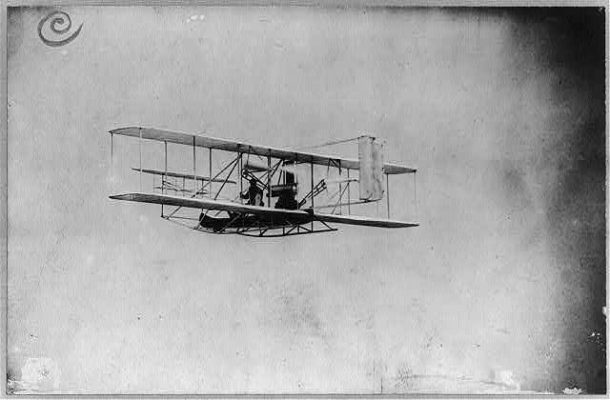
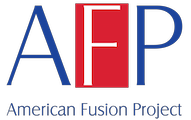



Write a comment: